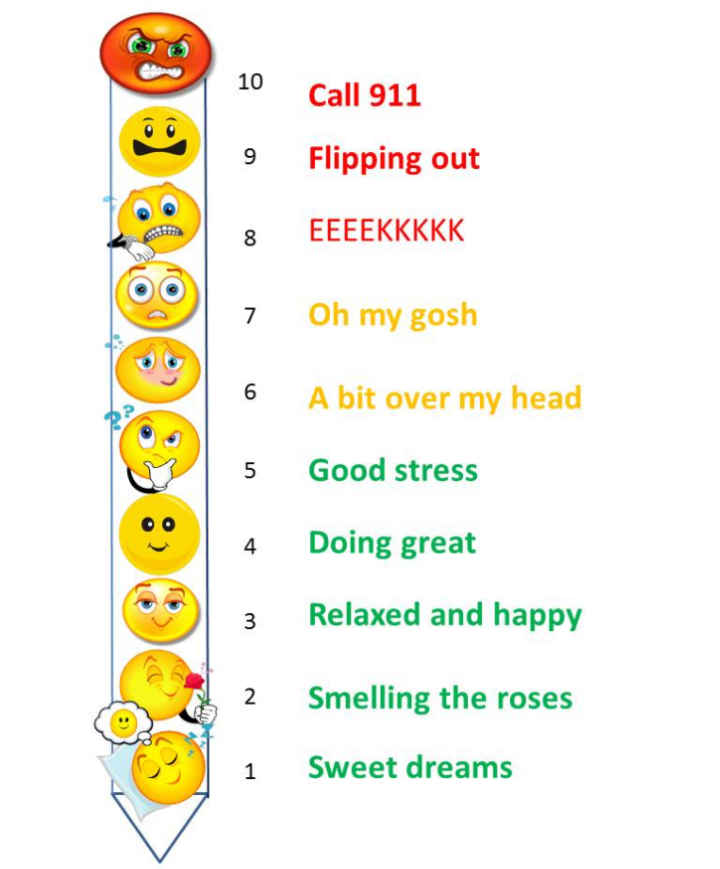Our world has so much goodness, and it is so important we communicate this message to our kids. At the same time, in the adult world we have a lot to contend with. It’s not just our kids we’re managing—we’re juggling home, work, finances, health, aging parents, natural disasters, and very intense politics. No matter how calm we try to be, feelings of frustration and anger are NOT alien.
None of us are immune to the stressors around us. When we are hungry or tired or not practicing regular self care, we are walking around with elevated stress hormones, and we are bound to flip our lids.
Here are some quick tips to help you build a self-care practice for you and your family to avoid flipping your lid—and a few ideas for when those feelings of anger become just too much.
Before getting into some methods, just a bit of theory to explain how and why we feel stress, and why these solutions WORK.
The Hand-Brain
Why is this important?
- Takes away the emotion of “flipping your lid” by linking it to our biology
- For little kids, we simplify even further and use thinking brain and feeling brain.
- The hand is a simple way to explain something complicated.
- “Scare juices” (cortisol injection) shoot through our body and make us feel terrible
- Kids get scared of the physical reaction that “scare juices” cause
- Educating them about the biology of it helps them normalize it and not be so scared of the reaction itself.

Introducing the “Feelings-o-meter”
What is it?
- A tool to help you gauge you and your kids’ emotional state
- Once in the red zone, rational thinking is not happening
Why is this important?
- Helps you to become a detective
- Teaches your kids to use the ‘feelings-o-meter’ to diagnose themselves before getting to the red zone

On a 0-10 scale, over a 4 is an indicator to use the hacks we will talk about. Over a 7, they can not access thinking. The “feelings-o-meter” helps kids tell us where they’re at.
All of us will sometimes get to the red zone!
In this post, you will learn some hacks tonight to use when you or your child is at a 4 to 7 to prevent full-on meltdowns.
Wise Mind and Worry Mind
- Worry mind tries to predict the future: (worry command center) = WHAT IF?
- Wise mind is rational: (facts/ logic) = WHAT IS
- Using this language with your kids can help them distinguish and externalize their worry.
Is worrying a bad thing?
Absolutely not! If we’re worried, it means we care about stuff. This is a good thing. Studies show optimal performance is when anxiety is a moderate amount
When does worrying become a problem?
Children experience various states of anxiety from the moment they are born, due to lack of experience and lack of communication. Sometimes it is easy to tell if a child is anxious by their crying and clingy behaviors but, generally, a child’s anxiety is hard to recognize and differentiate from a temporary bad mood, pain, personality development or confrontation.
To make things more complicated, a child’s anxiety can be a response to one, or both, of the parents who are anxious themselves and therefore less able to acknowledge their child’s emotional state.
The same major feelings defining anxiety are identical in children and adults.
Signs of Clinical Anxiety:
- Constant and unreasoned fear
- Constant feeling of loneliness
- Sadness
- Feeling of lack of power
- Somatic pains, such as: headache, digestive problems
- Tantrums and Defiant Behavior
Laddering
Kids who are able to manage their worry break it down into manageable chunks. Laddering uses this chunking concept and gradual exposure to reach a goal.
- Identify where on the feelings-o-meter the fear is
- If your child is above a 4, USE HACKS !
- Break it down into mini-steps
- Do what was once feared while also staying below a 6 on the feelings-o-meter.
Let’s say your child is afraid of going on the swing. Instead of avoiding this activity, create mini-goals to get closer to the bigger goal (e.g., go to the edge of the park, then walk into the park, go to the swings, and, finally, get on a swing). You can use each step until the exposure becomes too easy; that’s when you know it’s time to move to the next rung on the ladder.
Freeze
- Pause and take some deep breaths with your child. Deep breathing can help reverse the nervous system response. USE HACKS!
Empathize
- Anxiety is scary. Your child wants to know that you get it.
Evaluate
- Once your child is calm, it’s time to figure out possible solutions.
Let Go
- Let go of your guilt; you are an amazing parent giving your child the tools to cope.
Try not to give blanket reassurances—phrases like “it will be fine” “it’s not that scary” “no big deal” may only make your child feel worse that they have the fear or anxiety.
Modeled by some of my favorite kids.
Simple Hacks to Teach Your Kids
- Butterfly Hugs
- Gorilla Tapping
- Raindrops
- Breathe Happy
- Birthday Candles
- Lemon Squeeze
- Lightning Breath
- Happy Starfish
Some ideas to incorporate into your everyday that might help you not flip your lid.
Quick Self-Care
- Be kind to yourself
- Get deep sleep
- Chill out
- Time with friends
- Sweets only as special treat
- Get out in nature
- Stay active
- Meditation
- Massage
- Acupuncture
- Healthy Sex Life
- Laugh out loud
The most important thing you can do with your kids is to eat dinner with them without your screens.
The second most important thing: limit screen use.
It’s okay to use the digital babysitter. The screen is a helpful tool. Let’s not say we are not going to EVER use it. That sets us up to fail. But try not make it a habit.
Smart phones and screens are super cool and they keep us in a constant state of doing. But with every text, we get a dopamine hit. This causes an addiction. The thinking brain knows it needs a break from screens to rejuvenate and replenish—but the more primitive parts of our brain thrive on the stimulation.
Let your kids learn how to be bored! Think of it as a gift, not a parenting failure. I can’t say this enough!
Why boredom is good for your child:
- The beginning of creativity
- Self-structuring vs. imposed structures
- Time Management Skills
- Space to work out their feelings
- Exploring their own inner world
- Foundation for independent thought
- Building ability to lead a more meaningful life
Apps For Kids
It’s important for our kids to get out there and get their feet wet. They need to feel it is a safe world, try out things for themselves, and use all their capabilities.
- Playing in the sandbox
- Building with blocks
- Drawing
- Playing dress-up
- Staring at clouds
- Splashing in puddles
- Being bored
- Knitting
- Digging for worms
- Walking in the woods
- Reading a book
- Playing pretend
- Digging through mom or dad’s bag and counting change
Unstructured time can lead to wonderful things!
Sources & Further Reading